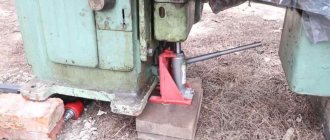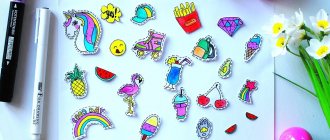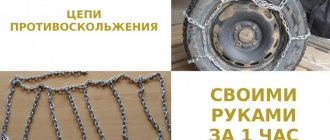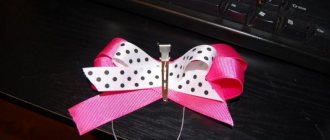Everyone knows that the better the quality of the ball joint or tie rod pin, the longer they last. But not everyone knows that the longer they serve, the stronger the cone of the part sticks to the socket. And sooner or later they have to be separated. The tightening torque of the ball joint pin nuts is approximately 10 kgf m.
(you can read about the correct tightening of fasteners and the tools for this in this article). It is easy to calculate that when tightened in this way, the conical pin is pressed into the socket with a force of several tens of tons.
And since the body of the pin and the socket have a conical shape (like a chop in a barrel), and it also happens that moisture gets between the joints and subsequently corrosion, it is not so easy to pull the ball pin back.
As happens very often, the simplest way to solve this problem for many “masters” is a gas torch and a sledgehammer. But after such popular repairs, it may be necessary to replace the entire suspension assembly.
Therefore, to avoid loss of time, nerve cells and money, I advise you to use a more delicate tool during repairs - special pullers.
But there are dozens of options on sale, and the car owner, especially for a beginner, is faced with the question - so which one to choose? Let's go over several options and evaluate their effectiveness, and I think that the issue of choice will be resolved after reading this article.
Moreover, if you know a turner and milling machine, if you can’t find the desired puller on sale, you can make it yourself, especially the simplest ones. By the way, special pullers for ball joints began to appear on sale relatively recently, but before, craftsmen made them themselves.
Let's start with the simplest, but despite this, the most trouble-free - the wedge. The wedge is driven between the socket and the head of the ball joint until the other wedge (cone) of the ball pin separates from the socket. As the popular proverb says, they knock out a wedge with a wedge, but the rubber boot breaks, and therefore the wedge can only be used to press out worn out hinges. And sometimes the hub needs to be removed for repairs, but the steering fingers are not yet worn out. Then screw pullers will help, which do not have the main drawback of a wedge in my opinion - the use of impact repair techniques, from which the suspension will not improve its “health”.
This puller, in photo 2, is convenient for the Zhiguli classics. It is very easy to install and secure to the center of the pin with the conical protrusion of the puller screw. Now you just need to tighten the fine-threaded screw with a 17 mm spanner, and the ball pin will fall out, leaving the rubber boot intact.
Photo 3 shows almost the same puller as above, only slightly larger in size. It is suitable for steering ends of Muscovites, Volgas and some foreign cars. This puller has only one drawback: the conical recess at the end of the screw, which is shown by the arrow (the recess is needed to fix the screw on the center of the finger), sometimes crushes the first thread of the thread on the finger, since the screw rotates to transmit force.
The pullers in photos 4 or 5 have the same drawback. These pullers are designed for dismantling the pins of the steering ends of front-wheel drive cars, on which the eye is made (stamped) from a steel sheet and a shoulder is left on its side. Special grooves are milled under this collar on the puller (seen in action in photo 5). In my opinion, photo 4 on the right shows a neater and more convenient puller with round grooves that fits on your finger more accurately.
Photo 6 shows a more universal puller, since its mouth is adjustable with clamping brackets. This puller is suitable even for Sable and Gazelle, but it has the same drawback as the puller in photo 3, the screw crushes the thread on the finger. However, the screw can be easily modified, for example, by welding a steel ball from a bearing onto its end or by turning it on a machine to fit the end of any finger. With this puller, the mounting bracket is usually deformed during operation, but it can also be restored if desired. Well, as always, versatility can be inconvenient for certain cars, since this puller is still too big for passenger cars.
The puller in photo 7, which at first glance looks massive, primitive and clumsy, in practice turned out to be the best of the entire article collection. Well, firstly, it is universal and suitable for almost any steering rods, as well as for ball joints. It does not spoil the thread on the finger and holds well, since its hook is motionless. And thanks to its powerful threaded diameter M20x1.5 and the corresponding 30 mm wrench nut, this puller is capable of developing a monstrously powerful force, and if this is not enough, the hook can be tapped with a hammer. Usually after this, even a very stuck finger breaks away. The apparent massiveness and bulkiness of this puller, as it turned out, does not in the least interfere with its installation on a finger. Well, one more advantage - the power nut is always located at the bottom and therefore is easily accessible to the wrench. And that’s why such pullers are more often found in car service workshops than others.
The pullers in photos 8 and 9 can only be used to remove ball joints. The puller in photo 8 is a waste of money, since its welded fork broke off during the first load. In addition, there is no fixation of the clamping bar and therefore the puller is always prone to slipping during operation. The force of the screw is not large and therefore you have to constantly help by hitting the rod with a hammer, and the impact disassembly technique is already a collective farm, and not a delicate repair. Well, the last drawback is that the connecting strip will not allow installing this puller on the steering ball pin.
In photo 9 the puller is a little better, since the position of the clamps can be adjusted with a screw and there is some kind of fixation. Its base is solidly forged and therefore quite strong, but the thread with a diameter of only M16x2 will not allow developing the required force, and the thread pitch is too large, and therefore you have to use the hammer again, striking the body and eyes.
Puller drawings. Repair equipment. Tool
This topic will provide drawings of pullers and devices for car repairs, as well as drawings of special tools.
The following drawings are currently available:
Drawing of the front suspension strut rod nut remover.
Drawing of a universal screw puller for steering rod pins.
Drawing of spring ties for front and rear suspensions.
Drawing of a puller for pressing out the silent block of the rear suspension shock absorber.
Drawing of a puller for pressing in the silent block of the rear suspension shock absorber.
Drawing of a wheel bearing puller for the front and rear wheels.
Drills for knocking out wheel bearings
Photo of drifts for knocking out a wheel bearing
Mandrels for pressing in wheel bearings
Photo of mandrels for pressing in the wheel bearing of the front and rear wheels of VAZ-2108, VAZ-2109, VAZ-21099, VAZ-2113, VAZ-2114, VAZ-2115. The photo also shows rings from old wheel bearings, they also help with pressing.
Drawing of a puller for replacing rubber-metal hinges of the rear beam.
Replacement of rubber-metal hinges of the rear beam
Photo of the puller
Drawing of a puller for replacing the silent blocks of the front suspension arm.
Photos of the puller
Puller for replacing silent blocks of the front suspension arm
Device for compressing brake cylinders.
The brake cylinder compressor is made from old brake pads. Everything seems to be visible in the photo.
Photo of a device for compressing brake cylinders.
Drawing of brake cylinder compression device
Source
DIY ball joint remover: instructions and materials
When repairing the chassis of any car, it becomes necessary to remove steering rods or ball joints. In both cases, their tip has a conical shape, which ensures optimal fit of the products in the socket. During operation, they become very compact, and if moisture gets between them, then corrosion forms at their joints. It makes it even more difficult to separate these parts.
To make repair work easier, a do-it-yourself ball joint remover would be an excellent option, which will greatly simplify the repair and help remove the tip with little effort.
Puller design
In order to press the hinge out of the suspension, serious effort is required. Some car owners simply knock out the shank with a sledgehammer, which risks damaging the threads.
To facilitate dismantling, a ball joint remover has been invented, with which you can create force without shock load. To understand how to make a device with your own hands, consider various options:
The illustration shows a screw-type ball joint remover.
- The hinge pin (1) is tightly installed in the steering knuckle housing (2).
- The puller bracket (3) is placed on the fist.
- Using the screw stop (4), the necessary pressure is created on the finger.
The advantage of the design is that the puller’s uniform and directed pressure on the ball joint avoids distortions and damage to the unit. Disadvantage - the tool can only be used if there is free space above the fastening nut.
Despite the complexity of the design, such a ball joint remover can be made with your own hands. You will need:
- steel sheet with a thickness of at least 4 mm;
- bolt with a strength class of 9.8 and higher;
- a nut, or a threaded bushing turned on a lathe;
- welding machine, grinder.
The design and dimensions of the puller are developed for a specific ball joint; the device is not universal.
If the installation location of the ball joints is quite compact, you can make a puller from a piece of pipe by welding plugs with holes at the ends. A thrust nut is welded to one of them.
Why do you need a ball joint remover?
Without it, it is difficult to dismantle and carry out repair work on the chassis of the car; a puller may also be needed to disassemble the steering joints . It can be used for ball joints of different diameters. When choosing its design, they rely on the technical characteristics of a particular car.
Theoretically, the dismantling of ball joints can be carried out with any available tool, using a sledgehammer or hammer, but such repairs are classified as “stressful”.
What does a puller look like?
There are three types of pullers :
They differ in appearance, but their operating principle is the same. The finger is twisted out of its seat using a hammer or by turning the nut . The puller is designed in such a way that it fills the space between the connected parts and after turning it you can hear a click, indicating that the connection has loosened and you can remove the ball joint from its seat.
The puller helps even a novice in auto repair work to dismantle it.
How often should the ball joint be replaced?
The frequency of replacement of joints is determined in the maintenance instructions for any vehicle. However, taking into account the “quality” of roads, supports fail much more often than the established period of 40-60 thousand km.
In addition, if the rubber boot is damaged, moisture and dirt get inside the hinge. If you don’t notice the gust in time, the unit will fail after a few hundred kilometers.
Wear is diagnosed by the presence of play and the characteristic knock of the suspension. It is recommended to regularly check the condition of the joints, especially after driving on broken asphalt or in off-road conditions.
Tem. It is known who repairs a car on their own in a garage. that many types of work can hardly be done without devices, in particular without pullers. In stores they can usually be purchased by pre-order, the fulfillment of which sometimes takes quite a long time. The price of this mechanism is also considerable.
With the help of homemade devices offered to the attention of readers, you can remove the pins of ball joints from the conical holes of the levers and rods without damaging the parts. Moreover, the pullers are almost universal and are suitable for repairing the corresponding (and other) components of most cars. and not only cars.
The material for making pullers can be selected and purchased at any collection point for ferrous scrap metal.
Which puller is better?
In the video you can see several options for ball pullers , among them the screw one , but only it must be made with high quality.
Its analogue in the form of a fork is universal, since it can be used not only for ball joints, it also helps when removing steering ends. However, its work can negatively affect the anthers.
There are difficult cases when you have to work with a puller and a hammer in pairs: first, the supports are pushed apart with a screw, and then you need to strike with a sledgehammer.
Step-by-step manufacturing instructions
The device for removing ball joints is quite complicated, but if you follow the step-by-step instructions, you can do it yourself:
The finished device is suitable for emergency and planned replacement of ball joints on Zhiguli and Lanos, as well as some brands of foreign manufacturers.
The manufactured puller is not universal and cannot be used for different components, but if you succeeded in doing it the first time, then subsequent versions will be much easier.
For 15 years I have been repairing various types of cars, including brands such as VAZ, UAZ, Chevrolet, Mazda, Kia and many others. Everything related to the gearbox, engine or chassis. You can write me your question below in the comments and I will try to answer it in detail.
Source
Required tools and materials for DIY replacement
The table below shows the tools and materials that need to be prepared before replacing the ball joint on a VAZ 2107.
Table - Tools and materials required to replace ball joints
| Name | Note |
| Puller | Special for VAZ 2107 ball joints or universal, for example, fork type. In extreme cases, you can do without a puller by using a hammer |
| Metal brush and rags | For cleaning surfaces and fastenings |
| Penetrating lubricant | For example, WD-40 |
| Key | "at 7", "at 22" |
| Grease | Graphite, ShRB-4, Litol-24 or special for ball joints |
| adjustable wrench | Lasting |
| Hammer | Medium size for easy removal of ball joints |
| Scrap | Can be replaced with a mount |
| Jack | To lift the car |
| Balloon wrench | For removing and installing wheels |
How to make a ball joint remover with your own hands
When carrying out repairs to the chassis and steering, there is almost always a need to remove ball joints or tie rod ends.
The peculiarity of these structural elements is that the support pin or tip has a conical shape, with which it fits into the seat.
During operation, the fit density increases so much that the surfaces of this joint practically stick to each other.
Additionally, moisture can get between the finger and the socket, causing pockets of corrosion that further seal the connection.
Therefore, to remove ball joints or tips, special pullers are used that allow you to press out the pin with minimal effort.
Screw puller
This is a more complex device. To make it you will have to use a welding machine. This device itself works by tightening a nut in a cylinder cut off on one side. Thus, the finger is squeezed out of the socket with minimal effort. You can do something like this:
Types of pullers
The auto tools market offers a wide selection of such removable mechanisms, which can be divided into two types:
Screw pullers are considered universal and are suitable for working with almost any car.
The force in them is created by screwing the bolt into the puller body. The housing itself is put on the support eye, and when tightened, the bolt rests against the support pin and presses it out of the socket.
Lever removable mechanisms are no less effective, but they are larger in size, so they may not be suitable for every car.
For example, with such a puller on a VAZ-2107 you can still remove the upper ball joint, but you won’t be able to get to the lower one due to very limited space.
For these purposes, a special puller is used.
The essence of a lever puller comes down to the presence of two levers connected in the middle.
On the one hand, holes are made in them and a coupling bolt is installed.
To press out, one lever is installed between the eye and the support, while the second lever is placed under the finger.
When the bolt is unscrewed, due to the existing connecting axis, the ends of the levers begin to converge and the pin is pushed out.
But it is not necessary to purchase a removable mechanism; it can easily be made at home from improvised materials.
Next, we’ll look at several types of ball joint and steering wheel pullers that you can make yourself.
Lever pullers.
Lever pullers are a tool consisting of a pair of levers connected to each other in the middle. They also have a coupling bolt on one side. In the process of acting on the ball joint, this bolt is unscrewed, bringing the ends of the levers together, one of which is located between the support and the eye, the second - under the finger.
Such pullers are also quite effective, but they are larger in size, so they may not be applicable everywhere.
Screw release mechanism
The second type of removable mechanism, which can be made from improvised means, is a screw release mechanism. It is perfect for replacing ball joints of classic VAZ models.
A special feature of the suspension design of these cars is that the upper and lower supports are located symmetrically to each other and the distance between them is not large.
It can be made at home only if you have a drilling machine, or you will have to go to a lathe. This puller consists of only two parts.
To make it, you will need a square or hexagonal rod with 17 or 19 key edges, the length of which is 7 cm. Using a drilling machine, we make a hole in this rod and cut a thread for a bolt of 8. Screw in the bolt and that’s it - the puller is ready.
Let's look at how it works using the VAZ-2107 as an example. To press out the upper support, you need to unscrew the lock nut, but not completely, you do not need to remove it. Then we install the manufactured puller between the pins of the supports with the bolt screwed in until it stops.
To squeeze out the finger, we take two keys - with one we hold the manufactured body, and with the second we unscrew the bolt until the finger falls off the socket. After replacing the upper support, we do the same, but with the lower one.
Screw L-shaped
The third type of removable mechanism, which you can make yourself, is also a screw mechanism, but it has shown itself to be excellent and allows you to work on any car.
To make it you will need a round metal rod with a diameter of at least 10 mm and a length of 15-17 cm.
From it you need to make an L-shaped blank with a shoulder length of 5 cm. That is, we take a rod, measure 5 cm on it, clamp it in a vice and use a hammer to bend it 90 degrees.
We cut a thread on the long part of the workpiece and select a nut.
All that remains is to make the thrust bar. It can be made in the likeness of the wedge described above. That is, we take a plate, but 0.5 cm thick. On one side we make a cut for the support pin.
If necessary, you can reduce the thickness of the plate on the cut side by grinding off the metal layer. The main thing is that the plate fits into the gap between the support body and the eye, but it is not too thin, otherwise it will bend during the pressing process.
On the other hand, from the cut we make a hole for the L-shaped workpiece. All that remains is to put the plate on the long part of the rod. If the thread is not long enough to squeeze out the finger, you can place several washers under the nut.
How to do it?
To make the puller, you may need some tools. What you need to use depends on the design.
- Here is an approximate list of what is needed:
- Bulgarian;
- Drill;
- Taps for thread cutting;
- Welding machine (for the manufacture of some varieties).
You will also need suitable hardware. And also nuts and bolts. Some work is easiest to do by clamping the workpiece in a bench vice.
Among many designs, the wedge is the simplest option. It is a metal end that is thin on one side and thickens on the other. At the same time, on the thin side there is a recess for the finger. This device is used as follows. It is inserted with a thin end into the gap between the ear of the steering knuckle and the hinge of the steering tip, after which.
The wedge is driven in there using a hammer. As you move, the tip will move out of the ear. You can make a device from any suitable piece of iron by turning or cutting out an opening for the finger.
Screw made from angle
Another screw puller can be made from a metal angle and a welding machine.
To do this, take a corner with sides 7-8 cm and the same length, and a thickness of 0.3-0.5 cm.
We make a cut in one of the sides to secure the mechanism to the eye. From sheet metal 0.3 cm thick we cut out two triangles that will act as braces. They need to be welded on the sides to the corner. This will significantly increase the strength of the structure.
We take a 17 nut and a long bolt for it. We weld the nut itself perpendicular to the cut so that its hole faces the cut.
So that in the future the bolt can be easily positioned on the same axis with the pin, before securing the nut by welding, a spacer must first be welded onto the corner.
All that remains is to screw in the bolt and the puller can be used.
These are the simplest types of removable mechanisms that you can make yourself.
In general, there are a lot of options, and with a little imagination and basic knowledge of plumbing, you can easily come up with and make your own puller.
We offer some drawings for viewing.
Wedge type puller (or fork)
The illustration shows the factory version. Working with such a puller requires physical effort. The longer the lever, the easier it is to dismantle the hinge.
The principle of operation is simple: a wedge is driven between the ball body and the suspension arm, then the lever is used to tear off the shank from the seat.
A serious drawback of the device is the possibility of damage to the suspension arm. The ball joint boot also breaks, so it cannot be reused.
Such a puller can be made from a 12-16 mm steel circle. You will need a welding machine and the work of a blacksmith. It is better to give the wedge-shaped “fork” using forging: if you simply grind off the metal, the strength will be lost.
After final processing of a homemade puller, it must be hardened. The steel is heated to a crimson color and immersed in water or oil.
Tool for unscrewing the support
We will consider another type, which is used not for pressing out the finger, but for removing the support itself.
The fact is that on a number of cars (Peugeot, Citroen) the ball joint is screwed into the lever. Over time, the threaded connection sours, and it is quite difficult to unscrew this suspension element without a special tool.
But you can make the necessary puller yourself, rather than spending money on a factory one.
It is made from a thick-walled pipe 2\'\' 8-9 cm long.
At the end of this pipe it is necessary to make 4 spikes with a width of 5 mm and a height of 7 mm, located at an angle of 90 degrees relative to each other.
That is, you should get 4 protrusions at the end of the pipe, evenly distributed around the circumference. This can be done using a hacksaw and a file, or with a grinder.
From the other end we make slits to a depth of 3 cm, dividing the circumference of the pipe into 8 parts.
Then we bend these petals to the center using a hammer, significantly reducing the diameter.
We take a 24mm nut and screw it to the end part, and then use a welding machine to seal the slots made.
It is quite convenient to work with such a puller - we put it on the support so that the spikes fit into special grooves on the support body.
In this case, the finger will pass through the manufactured tool, which will allow the locking nut to be screwed onto it, thereby securing the puller. All that remains is to use a 24mm wrench to unscrew the support using the welded nut.
Features of dismantling
No matter how good a tool you have in your hands, you need to use it correctly. Otherwise, there will be no sense. It is important to properly prepare the lever for repair. During operation, the connection between the steering knuckle and the steering pin is exposed to chemicals found on the road. Also, dust and sand get into the threaded connection. All this leads to sticking of parts. To avoid the hassle of disassembling them, you need to clean them before work.
This is done with a metal brush. After cleaning off the dirt, the joint is generously moistened with penetrating lubricant. These actions must be carried out several hours before repair, so that the lubricant eats away a sufficient amount of rust.
Conclusion
. There are a large number of devices available for complete car repairs. They all make the job easier. At the same time, drivers often wonder how to make a steering wheel end remover with their own hands. After all, the options sold in the store are not very reliable, which makes repairs a lottery; the risk of breaking the instrument is quite high.
When repairing the steering and chassis, almost every car owner is faced with a problem (tire rod ends), which is quite problematic to solve without a special tool.
The reason is the design features of the named elements: their fingers have a cone-shaped shape, with which they enter the mounting sockets; over time, the place of this entry becomes dirty, oily, rusty, making the connection of the surfaces too dense, almost uniform, that is, one that cannot be separated by simple physical force . You need an assistant - a ball joint remover - a tool that greatly simplifies pressing out.
It is not difficult to become its owner: to do this, you need to go to the nearest auto store and purchase it there, or make a ball joint remover with your own hands using any of the methods presented below, which we have grouped depending on how the force is created in them.
Alternative method
Finally, we note that it is possible to press out the support pin or tip even if it is not possible to make a removable mechanism. But this method should be used only in extreme cases. To remove the finger you will need a pry bar and a hammer.
The pry bar is used as a lever and must be installed in such a way as to create a force to press the support or tip, for example, place it between the steering rod and the rack eye.
After creating force with the mount, it is necessary to apply powerful blows to the body of the eye with a hammer. If everything is done correctly, then after 2-3 hits the finger will pop out.
The disadvantage of this method is that the eye can be damaged due to shock loads, so it is advisable to use pullers rather than knock out the support.
Source
Puller type - WEDGE
The simplest puller is the so-called “wedge”. It does not belong to any type of removable mechanism, but at the same time it is a fairly effective device for pressing out.
To make it, you only need an angle grinder (“grinder”), you can also use a machine with an abrasive wheel.
The blank will be a metal plate the size of a matchbox.
First, it is necessary to give the workpiece a wedge shape, for which we grind the metal with a grinder or machine so that the profile of the plate looks like a triangle. Then, using the same “grinder”, we make a cut in the middle 2/3 of the length of the workpiece from the side of the apex of the triangle, that is, from the thin side of the wedge. The width of the cut should be slightly larger than the thickness of the support pin, that is, you should get a kind of bracket.
If desired, you can weld a metal rod to the bracket, which will make it easier to work with the wedge in the future.
Pressing out a finger with a wedge is very simple. It is installed in the gap between the eye and the support body. And then the wedge is simply driven in with a hammer, which leads to the finger popping out of the socket.
The disadvantage of the wedge is that the boot will be damaged during the pressing process. Therefore, the wedge can only be used when replacing supports or tips.
If the suspension and steering mechanism are being repaired, which does not involve replacing the ball elements, it is better not to use a wedge.











